Crafting with Kids: DIY Decor Ideas
Are you ready to unleash your inner artist while spending quality time with your little ones? Crafting with kids is not just an enjoyable pastime; it’s an opportunity to create lasting memories and unique decor for your home. Imagine transforming your living space with vibrant, handmade decorations that reflect your family's personality and creativity. Whether you're decorating for a holiday, a birthday, or simply sprucing up your everyday environment, DIY decor projects are the perfect way to engage your children in a fun and educational experience.
Each project allows you to bond with your kids while fostering their creativity and fine motor skills. Think about it: when you sit down to create something together, you’re not just making art; you’re also building a stronger relationship. Crafting is like planting seeds of imagination that will grow into beautiful flowers of creativity. Plus, the joy of seeing your child's eyes light up when they finish a project is truly priceless!
As you embark on this crafting journey, keep in mind that the possibilities are endless. From colorful wall hangings to personalized picture frames, the decor you create together can be as unique as your family. So, grab those scissors, glue, and colorful papers, and let’s dive into the wonderful world of DIY decor ideas that will brighten up your home and your hearts!
Engaging in crafting activities with children promotes creativity, enhances fine motor skills, and strengthens parent-child relationships. When you craft together, you're not just filling your home with beautiful items; you're also nurturing your child's development in a fun way. Research shows that creative activities can boost problem-solving skills, encourage self-expression, and even improve academic performance. And who doesn't want a little extra creativity in their lives?
Moreover, crafting can be a great way to teach your kids about patience and perseverance. Sometimes projects don’t go as planned, and that’s okay! Learning to adapt and overcome challenges is a valuable life skill. So, don’t be surprised if your crafting sessions turn into lessons on resilience and teamwork!
Before you dive into your DIY projects, it's essential to gather the right supplies. Having a well-stocked craft corner will make your crafting experience smooth and enjoyable. Here are some must-have materials:
- Colored papers and cardstock
- Glue sticks and liquid glue
- Scissors (safety scissors for younger children)
- Markers, crayons, and colored pencils
- Paints and brushes
- Crafting tools like hole punches and washi tape
With these supplies on hand, you’ll be ready to tackle a variety of projects. Remember, the goal is to have fun and let your creativity flow!
When crafting with kids, safety should always be your top priority. Selecting safe, non-toxic materials is crucial to ensuring a fun and worry-free crafting environment. Look for products labeled as non-toxic, especially when it comes to paints, glues, and other supplies. Reading labels may feel tedious, but it’s worth it to keep your little ones safe while they explore their artistic side.
Incorporating eco-friendly materials into your projects is a fantastic way to teach your kids about sustainability. Consider using items like recycled paper, natural dyes, and biodegradable glues. Not only will you be creating beautiful decor, but you'll also be instilling important values in your children about caring for the planet. Think of it as crafting with a conscience!
Crafting doesn’t have to be an expensive hobby. You can find budget-friendly supplies in unexpected places! Check out local thrift stores, garage sales, and even your own home for materials that can be repurposed. Old magazines, fabric scraps, and even empty containers can all be transformed into beautiful decor. With a little creativity, you can create stunning projects without breaking the bank!
A well-organized craft space can enhance creativity and efficiency. Create an inviting and functional area for crafting with your kids by using clear bins for supplies, a large table for working on projects, and a designated spot for finished pieces. When everything has its place, it becomes easier to dive into crafting without the stress of searching for materials. Plus, a tidy space can inspire creativity!
Now that you have your supplies ready, let’s explore some fun DIY decor projects that you can create together! These activities are not only enjoyable but also allow you to add a personal touch to your home.
Creating seasonal decorations is a wonderful way to celebrate holidays and changing seasons. From homemade Halloween decorations to festive Christmas ornaments, the options are endless. Your kids will love helping to design and craft these items, and you’ll enjoy the warmth they bring to your home. Why not make a family tradition out of it? Each year, create new decorations together!
Transforming old household items into new decor can be a fun and educational experience. Think of it as giving new life to things that might otherwise end up in the trash. For example, you can turn glass jars into beautiful candle holders or old t-shirts into colorful wall art. Upcycling not only sparks creativity but also teaches your children about resourcefulness and the importance of reusing materials.
Q: What age is appropriate for crafting with kids?
A: Crafting can be enjoyable for children as young as two or three, with age-appropriate projects tailored to their skill level. As they grow, you can introduce more complex activities.
Q: How do I handle the mess that comes with crafting?
A: Embrace the mess! Cover surfaces with old newspapers or a craft mat, and have cleaning supplies handy. Remember, the joy of creating often comes with a bit of chaos!
Q: Can crafting be educational?
A: Absolutely! Crafting can enhance fine motor skills, promote problem-solving, and encourage creativity. You can even incorporate lessons about colors, shapes, and sustainability.
So, gather your supplies, roll up your sleeves, and start crafting! You’ll be amazed at what you can create together, and the memories you make along the way will last a lifetime.

Benefits of Crafting with Kids
Engaging in crafting activities with your children is more than just a fun pastime; it’s a treasure trove of benefits that can enrich their lives and strengthen your bond. Think of crafting as a magical bridge connecting creativity and learning, where each project opens doors to new skills and experiences. When you sit down with your little ones and get those creative juices flowing, you’re not just making art; you’re also fostering their imagination and self-expression.
One of the most delightful outcomes of crafting together is the boost in creativity. Children are naturally imaginative, and crafting offers them a platform to explore those wild ideas. Whether they’re painting a colorful canvas or assembling a quirky sculpture, they learn to think outside the box. This kind of creative thinking can spill over into other areas of their lives, helping them solve problems and approach challenges with a fresh perspective.
Moreover, crafting does wonders for enhancing fine motor skills. As kids cut, glue, and assemble various materials, they’re honing their hand-eye coordination and dexterity. Picture them carefully cutting shapes from paper or stringing beads together; these activities are not only enjoyable but also essential for their physical development. It’s like a fun workout for their tiny hands!
But let’s not forget about the emotional benefits! Crafting provides a wonderful opportunity for bonding between parents and children. When you create something together, you share laughter, stories, and even a bit of mess! This shared experience fosters a sense of teamwork and builds trust. Plus, when your child sees you working alongside them, it sends a powerful message: “I value your creativity, and I’m here to support you.”
Additionally, crafting can serve as a fantastic tool for teaching patience and perseverance. Not every project will go as planned, and that’s where the real learning happens. When something doesn’t turn out right, it’s a chance to discuss how to fix it or how to approach it differently. This process cultivates resilience, an essential skill for navigating life’s ups and downs.
Finally, let’s talk about the joy of creating something tangible. Kids love to see their ideas come to life, and completing a project gives them a sense of accomplishment. Whether it’s a painted flower pot, a handmade card, or a funky piece of wall art, these creations can boost their self-esteem and encourage them to take on new challenges. Plus, displaying their artwork at home can instill a sense of pride, turning your space into a gallery of their creativity!
In summary, the benefits of crafting with kids are numerous and profound. From enhancing creativity and fine motor skills to strengthening your relationship and teaching valuable life lessons, crafting is an enriching experience that can have lasting impacts. So why not grab some supplies and start your next project today? You’ll create memories that last a lifetime!
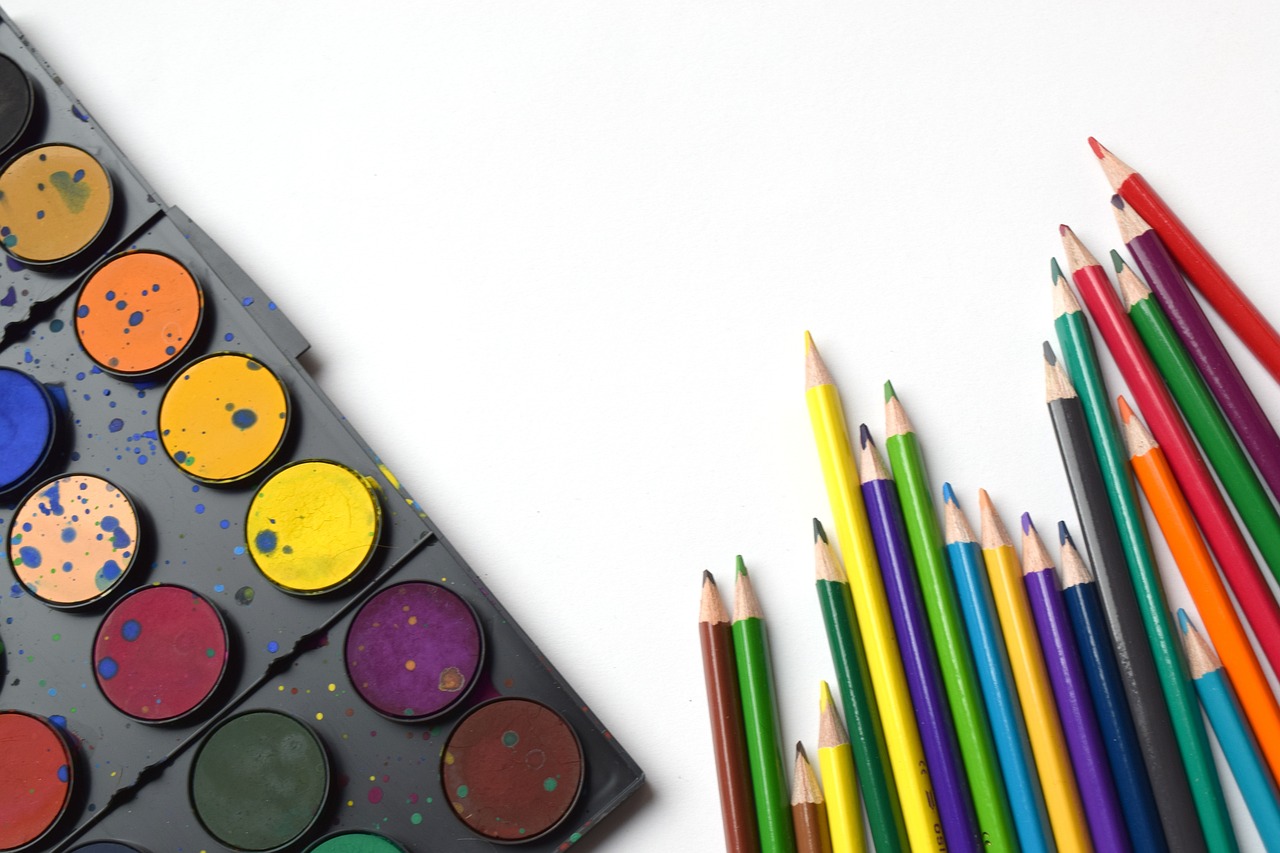
Essential Craft Supplies
Before diving into the wonderful world of crafting with your kids, it's essential to gather the right supplies. Think of your craft supplies as the paintbrushes and colors that bring your creative canvas to life! Having everything organized and ready to go not only makes the process smoother, but it also keeps the excitement alive. Imagine the joy on your children's faces when they see a well-stocked craft corner, full of vibrant papers, shiny glitters, and colorful paints. It's like opening a treasure chest of creativity!
So, what are the must-have materials for your crafting adventures? Here’s a quick rundown of some essentials that can kickstart your projects:
- Paper Products: Stock up on construction paper, cardstock, and scrapbooking paper. They are versatile and can be used for a multitude of projects.
- Adhesives: A good quality glue stick, liquid glue, or even a glue gun (with supervision) can make all the difference in your creations.
- Scissors: Safety scissors for younger kids and regular scissors for older ones will help in cutting out shapes and designs.
- Colors and Markers: Crayons, markers, and colored pencils are essential for adding that personal touch to any project.
- Crafting Tools: Items like hole punches, rulers, and stencils can elevate your crafts to the next level.
Additionally, don't forget about embellishments! Things like stickers, sequins, and ribbons can add flair to your projects and make them pop. It's like adding sprinkles on top of a cupcake — it just makes everything better! But remember, it’s not just about having a lot of supplies; it’s about using what you have creatively. Encourage your kids to think outside the box and use materials in unexpected ways.
As you prepare your craft supplies, consider organizing them in a way that makes them easily accessible. A simple storage solution could involve using clear bins or labeled boxes, so your little ones can find what they need without turning the house upside down. This not only fosters independence but also teaches them valuable organizational skills. After all, a clutter-free space is a creativity-friendly zone!
So, gather your supplies, set up your space, and get ready to embark on a crafting journey that will not only beautify your home but also create lasting memories with your kids. Remember, the most important ingredient in any DIY project is the joy of creating together!
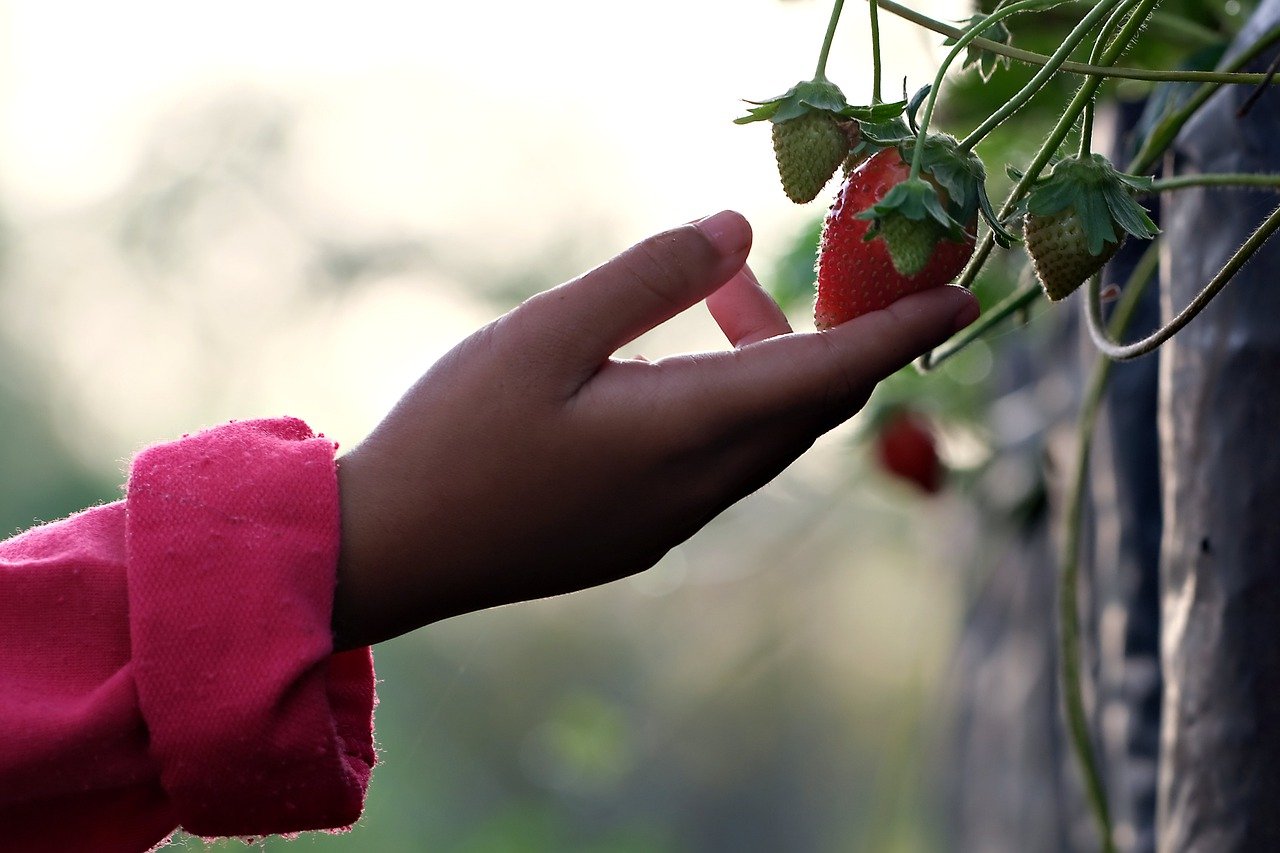
Choosing Safe Materials
When it comes to crafting with kids, one of the most important aspects is . Children are naturally curious and tend to explore their surroundings by touching and tasting everything. Therefore, ensuring that the materials you use are non-toxic is crucial. Always look for products that are labeled as non-toxic, water-based, and child-safe. This way, you can have peace of mind while your little ones unleash their creativity.
Another factor to consider is the age appropriateness of the materials. For instance, if you’re working with toddlers, avoid small items that can be choking hazards. Instead, opt for larger pieces that are easier to handle. Additionally, it's wise to steer clear of materials that contain sharp edges or small parts for younger children. Always read labels carefully and, when in doubt, do a bit of research to ensure the materials are safe for your child's age group.
Here are a few key points to keep in mind when selecting crafting supplies:
- Natural Materials: Whenever possible, choose natural materials like wood, paper, and fabric. These are generally safer and more eco-friendly than synthetic options.
- Adhesives: Use glue sticks or non-toxic craft glue instead of super glue or other strong adhesives that may contain harmful chemicals.
- Paints and Dyes: Opt for water-based paints and dyes that are labeled as non-toxic. They are easier to clean up and safer for children.
By paying attention to these factors, you can create a fun and safe crafting environment for your children. Remember, crafting should be an enjoyable experience, free from concerns about harmful materials. So, gather your supplies, roll up your sleeves, and get ready for some quality bonding time filled with creativity!
Q: What are some safe materials for kids' crafts?
A: Look for non-toxic paints, water-based glues, and natural materials like paper, wood, and fabric. Always check labels for safety certifications.
Q: How can I ensure my craft space is safe for children?
A: Organize your craft space by keeping sharp tools and small items out of reach. Use child-safe scissors and supervise your kids during crafting sessions.
Q: Are there eco-friendly crafting materials?
A: Yes! Consider using recycled paper, biodegradable glues, and natural dyes. There are many sustainable options available that are safe for children.
Q: What should I do if my child accidentally ingests craft materials?
A: If your child ingests any non-food item, contact your local poison control center or seek medical advice immediately.

Eco-Friendly Options
When it comes to crafting with kids, are not just a trend; they are a responsibility. As we engage in creative projects, it's essential to consider the impact these materials have on our planet. By choosing sustainable supplies, we not only create beautiful decor but also teach our children the importance of respecting and protecting the environment. Imagine transforming a simple craft session into a lesson about sustainability—it's a win-win!
One of the best ways to start is by selecting materials that are biodegradable or made from recycled content. For instance, instead of traditional plastic glitter, you can opt for biodegradable glitter made from plant cellulose. This small change can significantly reduce the amount of microplastics that end up in our oceans. Additionally, consider using natural paints, such as those made from fruits and vegetables, which are non-toxic and safe for your little ones.
Here are some eco-friendly materials to consider for your next crafting adventure:
- Recycled Paper: Use old newspapers, magazines, or scrap paper for collages and other projects.
- Natural Fibers: Materials like cotton, wool, or jute can be used for sewing or weaving projects.
- Wood: Look for reclaimed wood or bamboo for building and crafting.
- Plant-based Adhesives: These are safer alternatives to conventional glues and are better for the environment.
Furthermore, consider involving your kids in the process of sourcing these materials. A fun outing to a local craft store that specializes in eco-friendly supplies can be an educational experience. You can even explore your own home for items that can be repurposed or upcycled. This not only sparks creativity but also instills a sense of resourcefulness in your children. In essence, crafting can become a delightful journey of discovery where you both learn about the planet while creating something beautiful.
In addition to using eco-friendly materials, think about how you can make your crafting process more sustainable. For example, try to minimize waste by planning your projects carefully. Use only what you need, and save leftover materials for future crafts. This habit not only reduces waste but also encourages kids to think critically about their resources.
In conclusion, embracing eco-friendly options in your crafting endeavors is a fantastic way to nurture creativity while fostering a sense of environmental stewardship in your children. By making conscious choices today, we can inspire the next generation to be mindful creators and caretakers of our beautiful planet.
Q: What are some easy eco-friendly crafts I can do with my kids?
A: Some easy eco-friendly crafts include making paper mache from recycled newspapers, creating seed bombs with clay and compost, or painting rocks with natural paints. These projects are not only fun but also educational!
Q: Where can I find eco-friendly craft supplies?
A: Many craft stores now offer eco-friendly options. You can also check online retailers that specialize in sustainable products or even visit local thrift stores for materials.
Q: How can I teach my kids about sustainability through crafting?
A: Involve them in the decision-making process when selecting materials, explain the importance of recycling and reusing, and encourage them to think creatively about how to reduce waste in their projects.
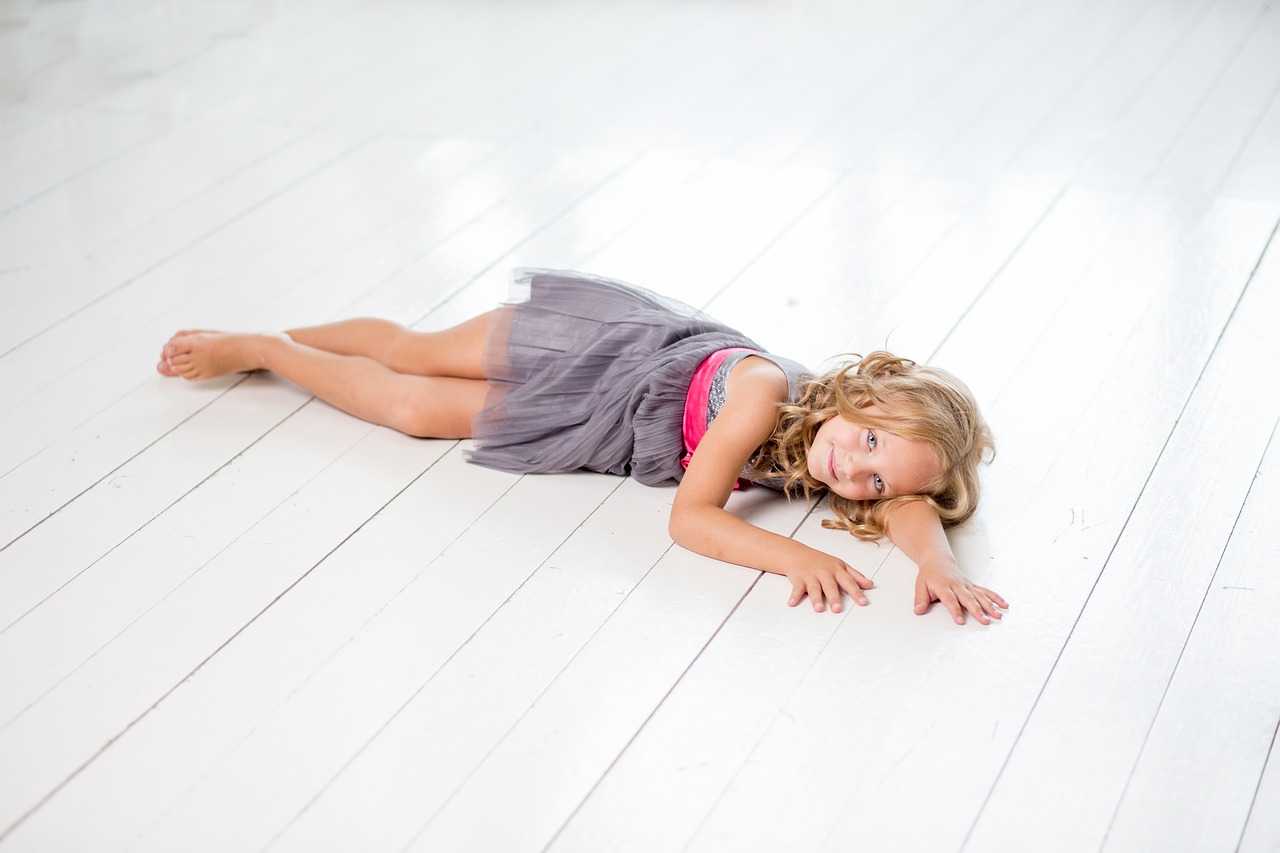
Budget-Friendly Supplies
When it comes to crafting with kids, the last thing you want is to blow your budget on supplies. Thankfully, there are plenty of budget-friendly options that can spark creativity without leaving your wallet feeling empty. One of the best strategies is to think outside the box and look for materials in unexpected places. For instance, you can raid your recycling bin for items like cardboard boxes, plastic bottles, and old newspapers. These everyday items can be transformed into amazing craft projects with just a little imagination!
Another great way to save money is to shop smart. Keep an eye out for sales at local craft stores, or better yet, check out dollar stores where you can find a treasure trove of crafting supplies at unbeatable prices. From glitter and paint to stickers and glue, these stores often have everything you need to get started on your DIY decor projects. Plus, many online retailers offer bulk discounts, which can be a lifesaver for families who craft regularly.
Don’t forget to tap into the power of community! Organizing a craft supply swap with friends or neighbors can be a fantastic way to refresh your crafting stash without spending a dime. Everyone has odds and ends lying around that they no longer need, and by exchanging supplies, you can discover new materials that inspire fresh ideas. This not only saves money but also fosters a sense of community and collaboration.
Here’s a quick summary of some budget-friendly supplies you might consider:
| Supply | Where to Find | Estimated Cost |
|---|---|---|
| Cardboard Boxes | Recycling Bin | Free |
| Plastic Bottles | Kitchen Recycling | Free |
| Glue Sticks | Dollar Store | $1 |
| Paint | Local Craft Store | $2-$5 |
| Scrap Paper | Old Notebooks | Free |
By embracing these and thinking creatively, you can ensure that your crafting sessions are not only enjoyable but also financially feasible. Remember, the goal is to have fun and create lasting memories with your kids, and you don’t need to spend a fortune to do that!

Organizing Your Craft Space
Creating a welcoming and efficient craft space is essential for maximizing creativity and ensuring a smooth crafting experience with your kids. Think of your craft area as a blank canvas; when organized well, it can inspire your little artists to create masterpieces. Start by choosing a dedicated space in your home—this could be a corner of the living room, a spare room, or even a section of the kitchen table. The key is to have a consistent area where all the magic happens!
Once you have your space, it's time to think about storage. Use clear bins and containers to keep supplies visible and accessible. This not only makes it easier for your kids to find what they need but also encourages them to take part in the organization process. You can label each container with pictures or words, making it a fun activity that teaches them about sorting and categorizing. For example, you might have separate bins for paints, brushes, papers, and embellishments.
Don't forget about vertical space! Shelves can be a great way to utilize the height of your room. Consider installing floating shelves or using a tall bookshelf to store items that are less frequently used. This approach keeps your workspace clear and provides easy access to your most-used supplies. Plus, it creates a visually appealing display of all your craft materials, which can be quite motivating!
Another fantastic idea is to create a craft supply station. This could be a rolling cart or a small table where you keep essential tools like scissors, glue, and tape. Having a designated spot for these items means less time searching and more time crafting. You could even personalize the station with your kids, letting them decorate it with stickers or their artwork!
Finally, consider incorporating a clean-up routine into your crafting sessions. At the end of each project, make it a habit to tidy up together. This not only teaches responsibility but also reinforces the idea that a clean space is a happy space. You could even turn it into a game—set a timer and see how quickly you can put everything away!
In summary, organizing your craft space is all about creating an inviting environment that encourages creativity and collaboration. By involving your kids in the process, you not only teach them valuable skills but also make it a fun family activity. So grab those bins, clear some shelves, and get ready to unleash your creativity!
Q: How can I encourage my kids to help organize the craft space?
A: Involve them in the process by making it a fun activity! Use colorful bins, labels, and let them decorate their space. You can also create a game out of it, like a race to see who can put away supplies the fastest.
Q: What are some must-have supplies for a kid-friendly craft space?
A: Essential supplies include non-toxic paints, child-safe scissors, glue sticks, construction paper, markers, and a variety of craft materials like beads, stickers, and fabric scraps.
Q: How can I keep the craft space clean and organized after projects?
A: Establish a clean-up routine where everyone pitches in to tidy up after crafting. You can also create designated spots for each type of supply to make it easier to put things away.
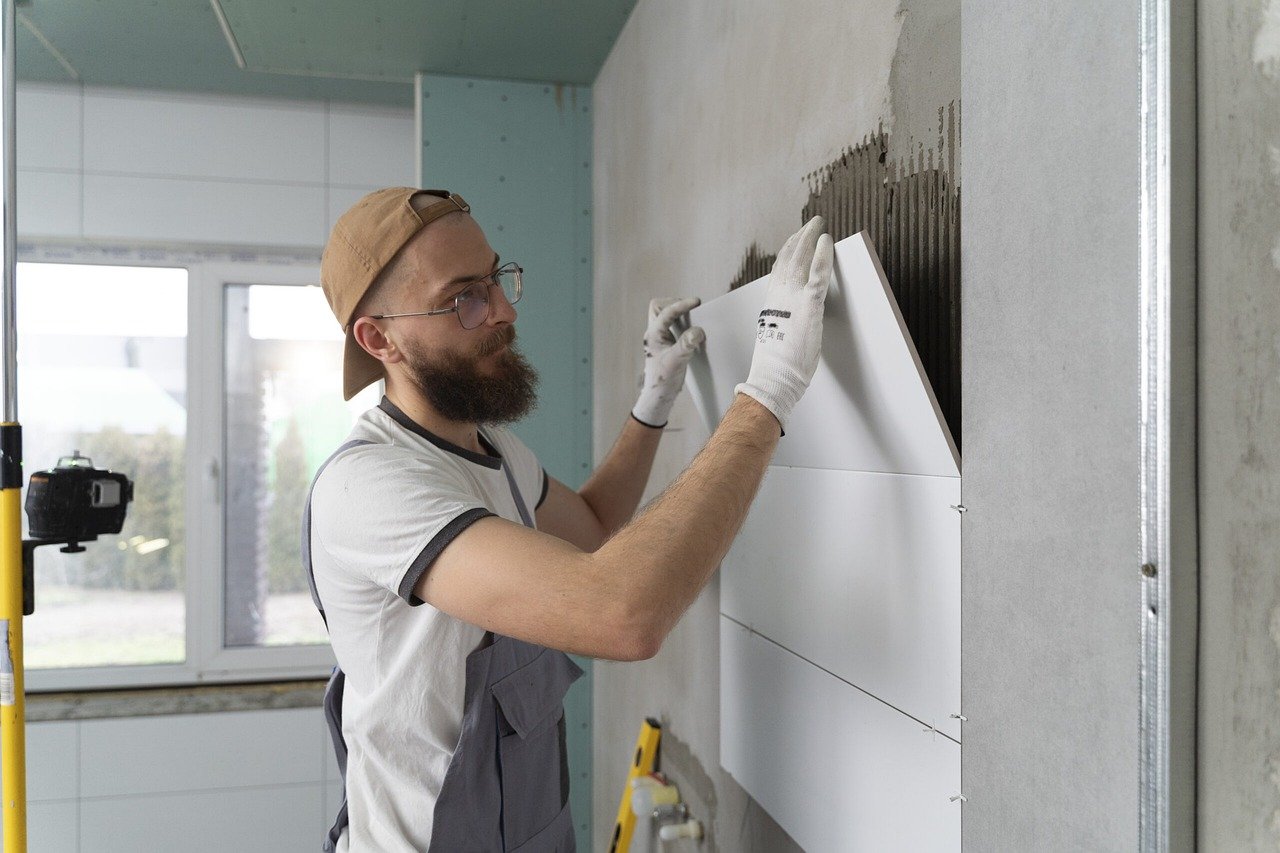
Fun DIY Decor Projects
When it comes to DIY decor projects, the sky's the limit, especially when you have your kids by your side! Not only do these projects allow you to express your creativity, but they also provide an opportunity to create lasting memories with your little ones. Imagine transforming your living space with unique, handmade items that reflect your family’s personality and style. In this section, we’ll dive into some exciting ideas that are sure to spark joy and creativity in your crafting sessions!
One fantastic way to get started is by making seasonal decorations. Whether it's autumn leaves, winter snowflakes, spring flowers, or summer suns, each season brings its own charm, and what better way to celebrate than by crafting? For instance, you could gather colorful paper and scissors to create vibrant garlands or ornaments. Kids love to cut, glue, and hang their creations around the house. Plus, these projects can be as simple or intricate as you like, making them perfect for all ages. Just think of the joy it will bring to see your child’s artwork displayed proudly on the mantelpiece or in the windows!
Another exciting avenue to explore is upcycling household items. This not only teaches kids about sustainability but also encourages them to think creatively. Have some old jars lying around? Why not turn them into beautiful candle holders or storage containers? With a little paint, some twine, and perhaps a few embellishments, those jars can become stunning decor pieces. You might also consider using cardboard boxes to create unique wall art or sculptures. The idea is to look at everyday items in a new light and see the potential for transformation. It’s like giving a second life to things that would otherwise be thrown away!
Here’s a quick overview of some fun projects you can tackle together:
| Project | Materials Needed | Estimated Time |
|---|---|---|
| Seasonal Garland | Colored paper, scissors, string, glue | 1-2 hours |
| Upcycled Jar Candle Holders | Old jars, paint, twine, tealight candles | 1 hour |
| Cardboard Wall Art | Cardboard, paint, scissors, glue | 2-3 hours |
These projects not only beautify your home but also foster a sense of accomplishment in your children. As they see their creations come to life, they’ll feel proud and excited to share them with family and friends. Plus, it’s a great way to sneak in some learning about colors, shapes, and even environmental responsibility!
So, gather your supplies, roll up your sleeves, and let the creativity flow! Remember, the goal here is to have fun and enjoy the process together. Who knows? You might just discover a hidden talent or two along the way!
Q: What age is appropriate for DIY projects with kids?
A: Generally, children aged 3 and up can participate in simple DIY projects. However, the complexity can vary based on the child's skill level and interests.
Q: How can I make crafting safe for my kids?
A: Always choose non-toxic materials, supervise closely, and ensure that tools are age-appropriate. Safety first!
Q: What if I don't have many supplies?
A: Look around your home for items you can upcycle or repurpose. Many DIY projects can be done with common household items.
Q: How long do these projects usually take?
A: Project times can vary. Simple crafts might take an hour, while more intricate projects could take several hours. It’s all about enjoying the process!
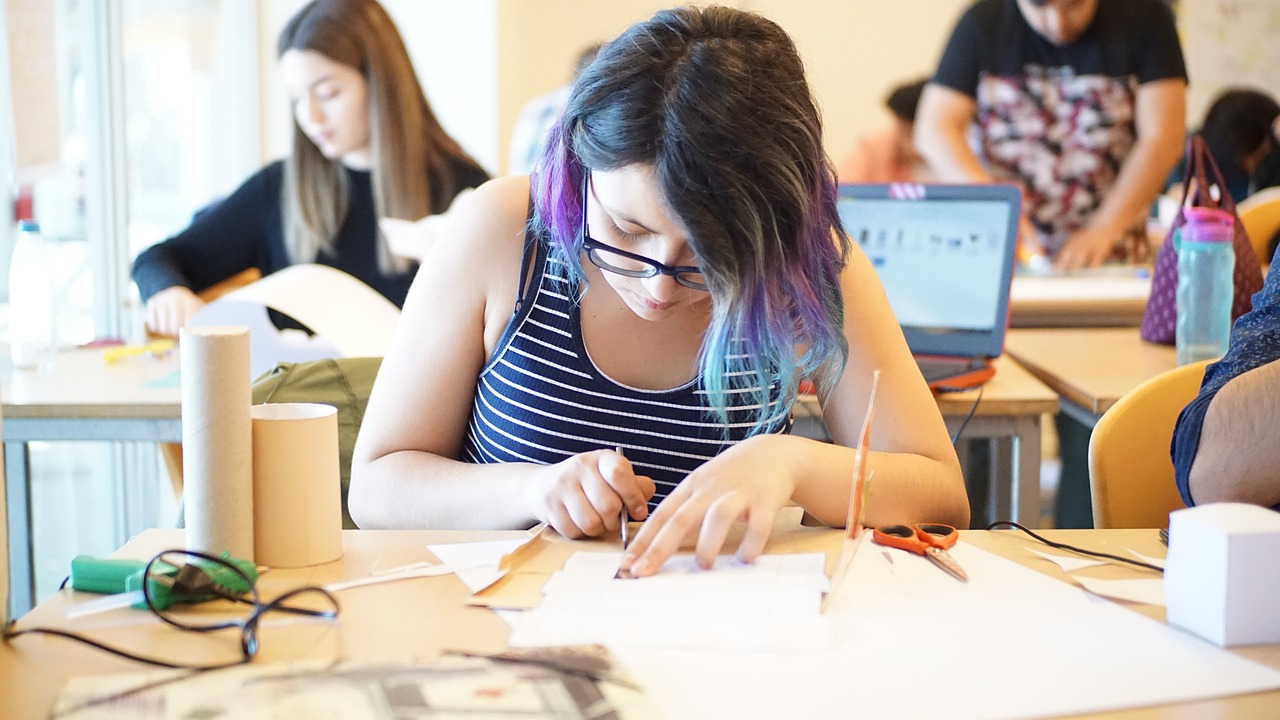
Seasonal Decorations
Creating with your kids is not just about beautifying your home; it's a delightful way to celebrate the changing seasons and the various holidays throughout the year. Imagine the joy on your little ones' faces as they see their handcrafted decorations adorning your living space! From colorful autumn leaves to sparkling winter snowflakes, each project offers a unique opportunity for creativity and bonding.
One of the best parts about crafting seasonal decorations is the variety of materials you can use. For instance, during fall, you can gather leaves, twigs, and pinecones from your backyard to create a stunning centerpiece. In winter, why not transform some old white paper into beautiful snowflakes? The possibilities are endless! To get you started, here are a few fun ideas:
- Spring Blossoms: Use tissue paper to create colorful flowers that can be hung around the house.
- Summer Sun Catchers: Cut out shapes from clear plastic and decorate them with markers to create vibrant sun catchers that will brighten any window.
- Halloween Spookiness: Craft spooky ghosts using white balloons and black markers, or create a pumpkin garland from orange paper.
- Winter Wonderland: Make a snowman out of cotton balls and paper, or create a festive wreath using evergreen branches and ornaments.
These projects not only beautify your home but also teach your children valuable lessons about seasonality and the importance of celebrating different times of the year. Plus, there’s something incredibly satisfying about seeing your children’s creativity come to life in the form of handmade decorations. It’s like bringing a little piece of their imagination into the real world!
As you embark on these crafting adventures, don’t forget to take lots of photos. Documenting the process will not only create lasting memories but also allow you to look back on how much your kids have grown and how their artistic skills have developed. Who knows? You might even inspire future generations to continue the tradition!
So, gather your supplies, roll up your sleeves, and dive into the wonderful world of seasonal crafting with your kids. It’s not just about the end product; it’s about the laughter, the mess, and the memories you create together. Happy crafting!
Q: What are some easy seasonal decorations I can make with my kids?
A: Some easy projects include paper snowflakes for winter, painted rocks for summer, leaf garlands for fall, and colorful flowers for spring. These are simple yet fun activities that can be done with minimal materials.
Q: How can I ensure that the materials we use are safe for my kids?
A: Always look for non-toxic and child-safe materials. Read labels carefully and opt for products specifically designed for children, such as washable paints and safe adhesives.
Q: What if I don’t have a lot of crafting supplies?
A: Don’t worry! You can use everyday items from around the house, like cardboard boxes, old magazines, and recycled plastic bottles. Creativity knows no bounds!
Q: How can I incorporate learning into our crafting sessions?
A: You can discuss the significance of each season, explore colors and shapes, or even integrate math by measuring materials. This way, crafting becomes a fun learning experience!

Upcycling Household Items
Upcycling is not just a buzzword; it's a fantastic way to turn what would otherwise be trash into treasure! Imagine your kids transforming an old glass jar into a vibrant flower vase or an empty cereal box into a colorful storage solution. These projects not only foster creativity but also teach children the importance of sustainability and resourcefulness. By upcycling household items, you're giving new life to objects that might have ended up in the landfill, all while spending quality time with your little ones.
One of the most exciting aspects of upcycling is that it encourages kids to think outside the box. They learn to see potential in everyday items that most people would overlook. For instance, an old t-shirt can be transformed into a stylish tote bag, or wine corks can become unique bulletin board decorations. The possibilities are endless! To get started, gather a few common household items that are no longer in use. Here are some ideas to spark your creativity:
- Glass jars
- Old t-shirts
- Cardboard boxes
- Plastic bottles
- Wine corks
Once you have your materials, the next step is to brainstorm projects together. Encourage your kids to come up with their own ideas or search for inspiration online. You might be surprised at how imaginative they can be! For example, a simple glass jar can be painted and decorated to become a beautiful candle holder. Or, an old wooden pallet can be transformed into a rustic shelf. The key is to let their creativity flow and to support their ideas.
Not only does upcycling provide a fun activity, but it also reinforces valuable lessons about reducing waste and being environmentally conscious. As you work together, discuss the impact of waste on the environment and how small changes can lead to a big difference. This conversation can help instill a sense of responsibility in your children, making them more mindful consumers in the future.
Lastly, don't forget to celebrate your completed projects! Display them around your home or give them as gifts to friends and family. This not only boosts your child's confidence but also shows them that their hard work and creativity have resulted in something beautiful and useful. Upcycling is more than just a craft; it’s a journey of discovery, creativity, and environmental awareness that you can share with your kids.
1. What types of items can be upcycled?
You can upcycle almost anything! Common items include glass jars, cardboard boxes, old clothing, plastic bottles, and furniture. The key is to look at these items creatively and think about how they can be transformed.
2. Are there any safety concerns when upcycling with kids?
Yes, safety is paramount. Always supervise your children, especially when using tools like scissors or hot glue guns. Ensure that all materials used are safe and non-toxic. If you’re unsure, do a little research on the materials before starting your project.
3. How can I encourage my child to be creative during upcycling projects?
Encourage your child to express their ideas freely. Ask open-ended questions and provide them with the freedom to explore their creativity. You can also look for inspiration together online or in craft books to get their creative juices flowing.
4. What should I do with the finished upcycled projects?
You can display them in your home, give them as gifts, or even host a mini-exhibition for family and friends. Celebrating their creations will boost your child's confidence and encourage them to continue being creative.
Frequently Asked Questions
- What are the benefits of crafting with kids?
Crafting with kids is not just about making pretty things; it’s a fantastic way to boost their creativity and fine motor skills. Plus, it creates precious bonding moments that you’ll both cherish forever. Think of it as a fun way to learn and grow together!
- What essential supplies do I need for DIY projects?
Before diving into the crafting world, gather some essential supplies. You’ll want basics like glue, scissors, colored paper, and markers. Depending on your project, you might also need items like paint, brushes, and decorative elements. Having these on hand will make your crafting experience smooth and enjoyable!
- How do I choose safe materials for my kids?
Safety first! Always opt for non-toxic and child-safe materials. Look for labels that indicate they are free from harmful chemicals. It’s like choosing the right ingredients for a delicious recipe; you want to ensure everything is safe and healthy for your little ones!
- Are there eco-friendly crafting options?
Absolutely! Eco-friendly materials like recycled paper, natural paints, and biodegradable glues are great options. Not only do they keep your kids safe, but they also help protect our planet. It’s a win-win situation!
- Can I find budget-friendly craft supplies?
You bet! Crafting doesn’t have to drain your wallet. Check out local dollar stores, thrift shops, or even your own home for items you can repurpose. It’s all about being resourceful and having fun without spending a fortune!
- How should I organize my craft space?
A well-organized craft space can spark creativity! Set up a designated area with bins for supplies, a table for projects, and good lighting. Think of it as your crafting sanctuary, where ideas can flow freely!
- What are some fun DIY decor projects for kids?
There are tons of fun DIY decor projects! From seasonal decorations like homemade ornaments to upcycling old jars into colorful vases, the possibilities are endless. Let your imagination run wild and create unique pieces that reflect your family's personality!
- How can we make seasonal decorations together?
Making seasonal decorations is a blast! Choose a holiday or season, gather your supplies, and let your kids’ creativity shine. Whether it’s crafting spooky Halloween decorations or festive Christmas ornaments, it’s all about having fun and celebrating together!
- What are some ideas for upcycling household items?
Upcycling is an exciting way to give old items new life! Turn empty cereal boxes into colorful storage bins or transform glass jars into charming candle holders. It’s like a treasure hunt in your own home, discovering ways to repurpose what you already have!



















